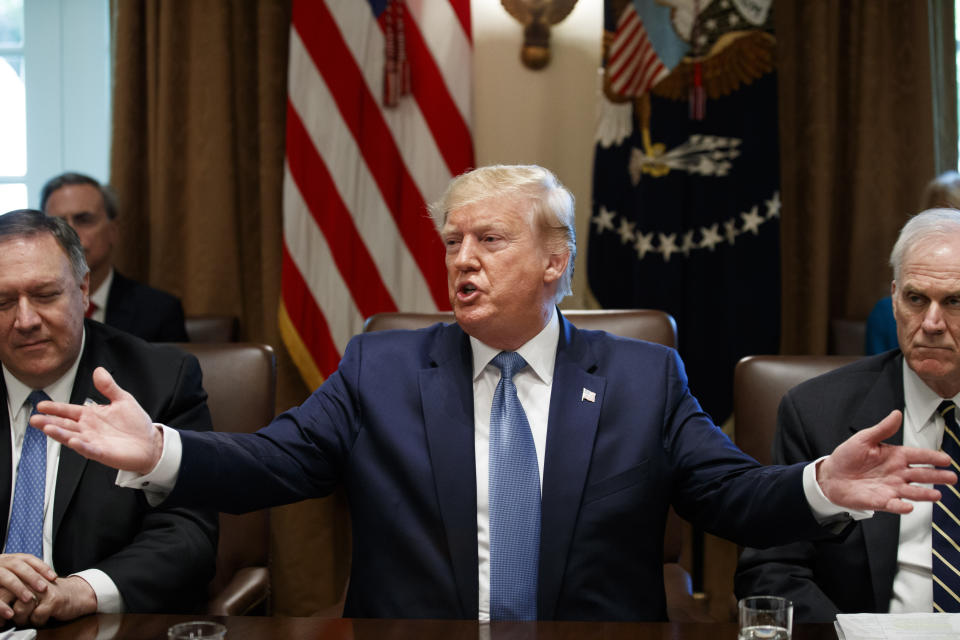Trump is bluffing on China tariffs
Sometimes President Trump does what he says he’s going to do. But sometimes he doesn’t. How can you tell when he means it, and when he’s bluffing?
It’s actually not that hard. If a Trump action would rattle the stock market, it’s unlikely to happen—at least for long. Trump has tested this dynamic for the last year and a half, and developed a pretty good feel for what he can get away with. Markets are generally okay, for instance, with the tariffs he has imposed so far, most of them on imports from China.
Subscribe to Rick’s podcast here
But Trump would cross into a no-go zone if he imposed the latest set of tariffs he has threatened. Trump reminded the world on July 16 that he might still impose tariffs of up to 25% on $300 billion worth of imports from China. Unlike prior tariffs, which mostly affected raw materials and components from China, the final $300 billion would hit finished consumer products such as clothing, appliances, toys and electronics. Consumers would notice price hikes overnight, directly commensurate with the size of the tariffs.
If a $200 bicycle suddenly cost $250, and so on down the shelves of every Walmart and Target in America, it would slam consumer and business confidence and cause the sort of stock-market drop Trump lacks the stomach for. UBS estimates that if Trump hit all consumer imports from China with a 25% tariff it would cut GDP growth by about 1.2 percentage points. The economy is only growing by about 2.5%, so cutting growth in half could come close to triggering a recession.
Risking reelection
Trump might be reckless, but he isn’t crazy—and he’s not likely to torpedo the U.S. economy in any way that might impinge his reelection odds. Driving up prices on thousands of everyday items would. It’s possible he might start not with 25% tariffs, but with much smaller 5% levies that would rise over time, as he did in June when using tariffs on Mexican imports to goad America’s southern neighbor into more aggressive policing of migrants. But China is a bigger importer, and incrementally rising tariffs on Chinese imports would amount to a series of economic time bombs that would each hurt more than the prior one. China would probably be more inclined to sit back and watch America sink itself than to intervene and stop it.

As many analysts predicted, the trade “truce” Trump negotiated with President Xi Jinping of China in late June hasn’t produced any sort of breakthrough and could end up short-lived. There are fresh signs of tension, such as Chinese threats to sanction U.S. defense contractors selling arms to Taiwan. Trump is complaining that China isn’t ramping up purchases of U.S. farm products, as promised in late June. Trump himself now says there’s a “long way to go” to get a trade deal with China.
Trump wants China to think he’s in no hurry to make a deal. But time is on China’s side – not Trump’s – because of the U.S. elections coming up in barely 20 months. Trump promised a trade deal with China, and the closer election day draws, the more Trump needs a deal he can claim as a victory. Escalating now isn’t likely to get him there.
It’s possible nothing will produce a trade deal with China, with Trump’s chief trade nemesis simply waiting to see if he loses in 2020. Or, China could offer modest concessions that fall far short of what Trump wants, but give him some kind of outcome he can dress up as a deal.
If Trump goes ahead with his additional tariffs on Chinese imports, however, China might be inclined to call his bluff, letting him explain to American voters why he’s driving down stock prices and jeopardizing the U.S. recovery. That’s a question Trump doesn’t want to answer. So he’ll probably do what he can to make sure nobody needs to ask him about it.
Rick Newman is the author of four books, including “Rebounders: How Winners Pivot from Setback to Success.” Follow him on Twitter: @rickjnewman
Confidential tip line: rickjnewman@yahoo.com. Encrypted communication available. Click here to get Rick’s stories by email.
Read more:
Biden’s health care plan is a potent weapon against Trump
The Democrats need better villains
The Trump trade war is far from over
Everybody running for president is rich
Elizabeth Warren’s best and worst economic ideas
Medicare for all won’t work. This might
Read the latest financial and business news from Yahoo Finance
Follow Yahoo Finance on Twitter, Facebook, Instagram, Flipboard, SmartNews, LinkedIn, YouTube, and reddit.

 Yahoo Finance
Yahoo Finance 
